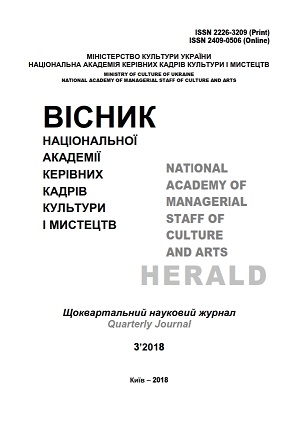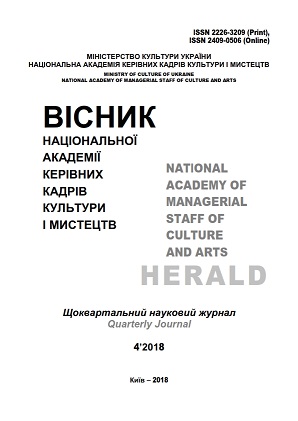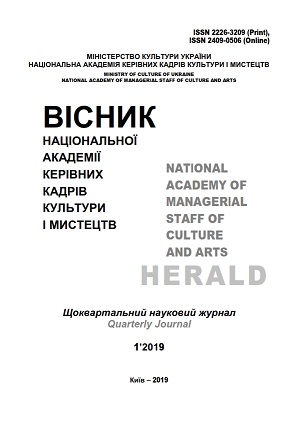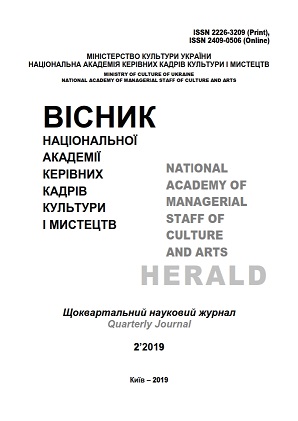Білоруська духовно-пісенна традиція в історичній динаміці
Purpose of Article. The study reproduces a complete picture of the formation and development of Belarusian sacred songs in terms of the confessional diversity and national specification; the differences of Belarusian sacred songs from Ukrainian and Russian are described. Methodology is centered in the practice of the combination of historical, cultural, comparative and analytical methods which allowed to characterize the peculiarities of the development of the Belarusian sacred song tradition from the Middle Ages to the present. Scientific Novelty of the research lies in the fact that for the first time in Ukrainian science the historical and cultural discourse of the Belarusian sacred song tradition in its confessional diversity and the national specification was created. Conclusions. In the East Slavonic sacred song repertoire it is most difficult to disassemble the Belarusian component, which is most difficult to distinguish through the linguistic factor, therefore Belarusian songs are usually considered in the context of the Polish, Ukrainian, Russian traditions. Non-Orthodox denominations were played a prominent role in the formation and development of the Belarusian sacred songs, forming the specific feature of ones, which distinguishes it from the other East Slavonic sacred song traditions.
More...



